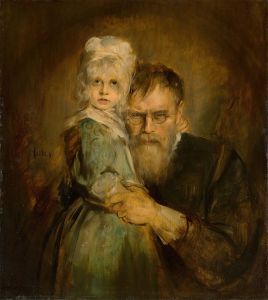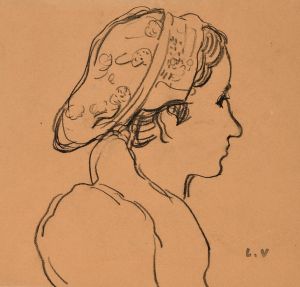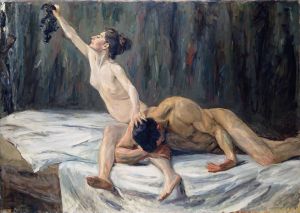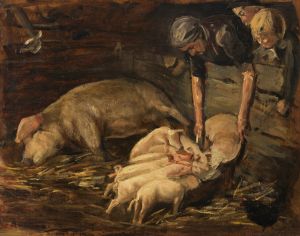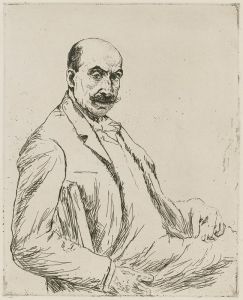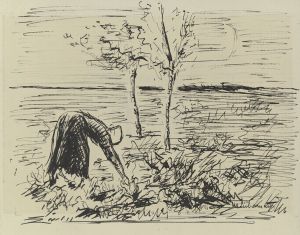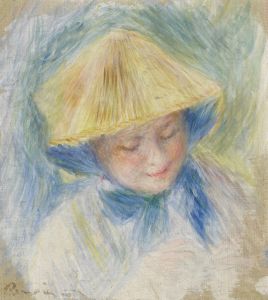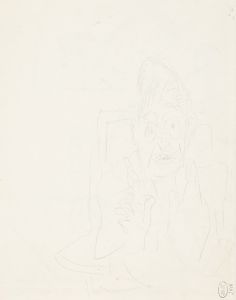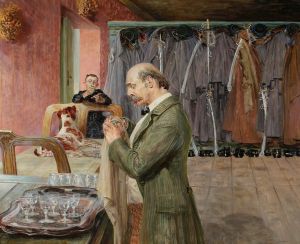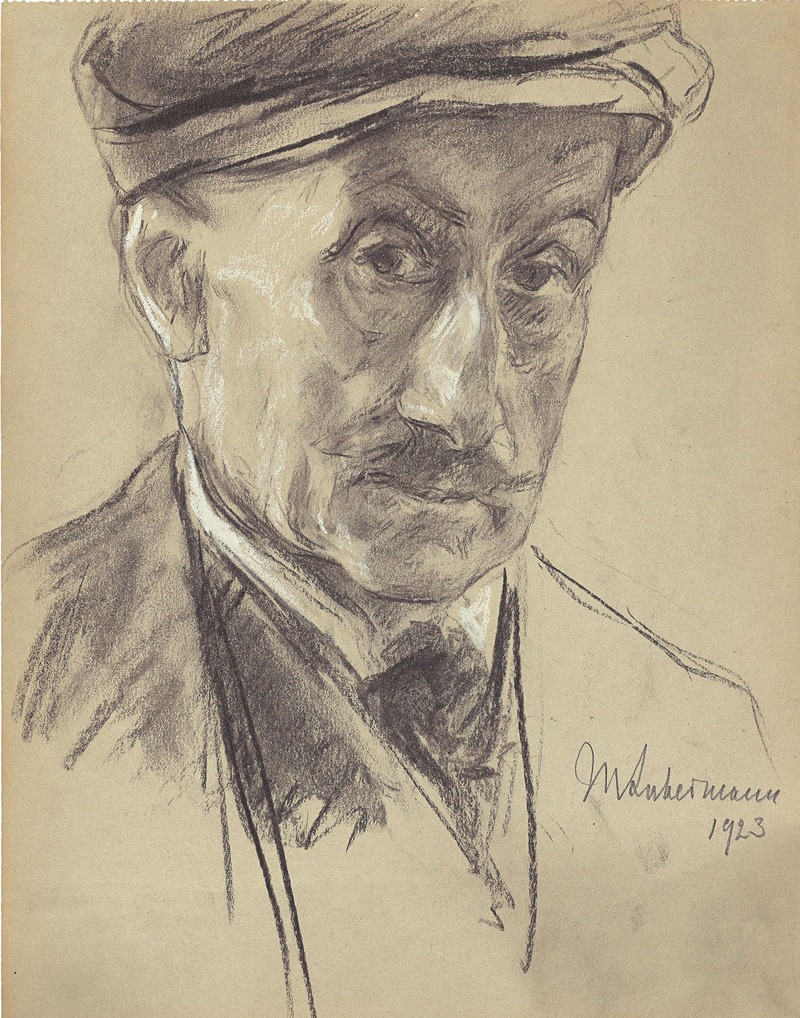
Selbstbildnis mit Schirmmütze
A hand-painted replica of Max Liebermann’s masterpiece Selbstbildnis mit Schirmmütze, meticulously crafted by professional artists to capture the true essence of the original. Each piece is created with museum-quality canvas and rare mineral pigments, carefully painted by experienced artists with delicate brushstrokes and rich, layered colors to perfectly recreate the texture of the original artwork. Unlike machine-printed reproductions, this hand-painted version brings the painting to life, infused with the artist’s emotions and skill in every stroke. Whether for personal collection or home decoration, it instantly elevates the artistic atmosphere of any space.
Max Liebermann was a prominent German painter and printmaker, associated with the Impressionist movement. He was one of the leading figures in the Berlin Secession, an art movement that sought to break away from the traditional academic art styles of the time. Liebermann's work is characterized by its loose brushwork, vibrant use of color, and focus on everyday life and landscapes.
"Selbstbildnis mit Schirmmütze" (Self-Portrait with Cap) is one of Liebermann's self-portraits, showcasing his skill in capturing human expression and character. While specific details about this particular painting are limited, it is known that Liebermann created numerous self-portraits throughout his career, each reflecting different aspects of his personality and artistic evolution.
In "Selbstbildnis mit Schirmmütze," Liebermann presents himself wearing a cap, a common accessory in many of his self-portraits. This choice of attire may reflect his personal style or a desire to present himself in a more casual, approachable manner. The painting likely features the loose brushwork and attention to light and shadow that are hallmarks of Liebermann's style.
Liebermann's self-portraits are significant not only for their artistic merit but also for their insight into the artist's self-perception and identity. Through these works, Liebermann explored themes of aging, introspection, and the role of the artist in society. His self-portraits often convey a sense of introspection and contemplation, inviting viewers to engage with the artist on a personal level.
Throughout his career, Liebermann was influenced by various artistic movements and styles. He studied in Weimar, Paris, and the Netherlands, where he was exposed to the works of the Old Masters as well as contemporary artists. This diverse range of influences is evident in his work, which combines elements of realism, impressionism, and even post-impressionism.
Liebermann's contributions to the art world extend beyond his paintings. As a leader of the Berlin Secession, he played a crucial role in promoting modern art in Germany. He advocated for artistic freedom and innovation, challenging the conservative norms of the art establishment. His efforts helped pave the way for future generations of artists and contributed to the development of modern art in Europe.
Despite facing significant challenges during his lifetime, including the rise of anti-Semitism and the Nazi regime's condemnation of his work, Liebermann remained a dedicated and influential figure in the art world. His legacy continues to be celebrated today, with his works held in major museums and collections around the world.
In summary, "Selbstbildnis mit Schirmmütze" is a testament to Max Liebermann's skill as a portraitist and his ability to convey complex emotions and ideas through his art. While specific details about this painting are limited, it remains an important part of Liebermann's oeuvre, reflecting his enduring impact on the art world and his exploration of self-identity.





